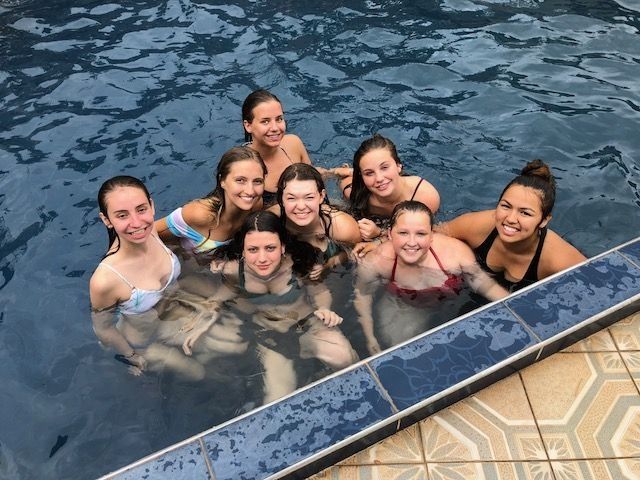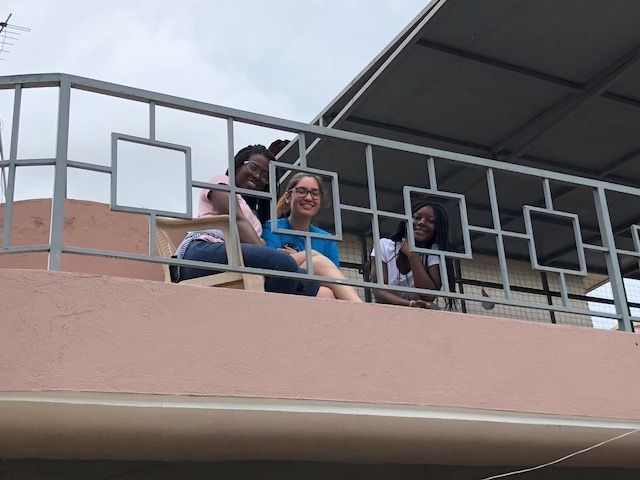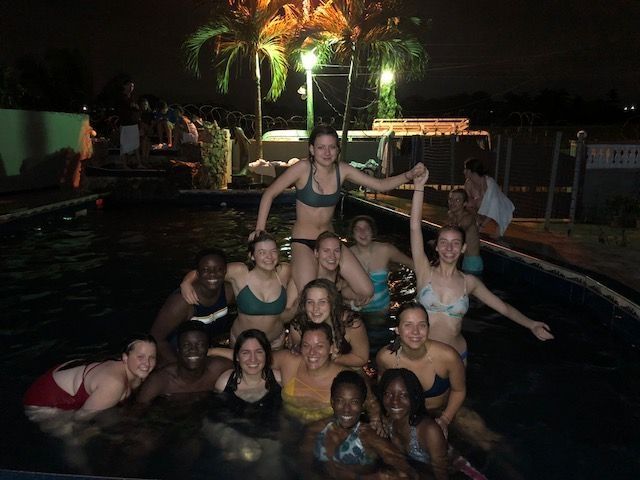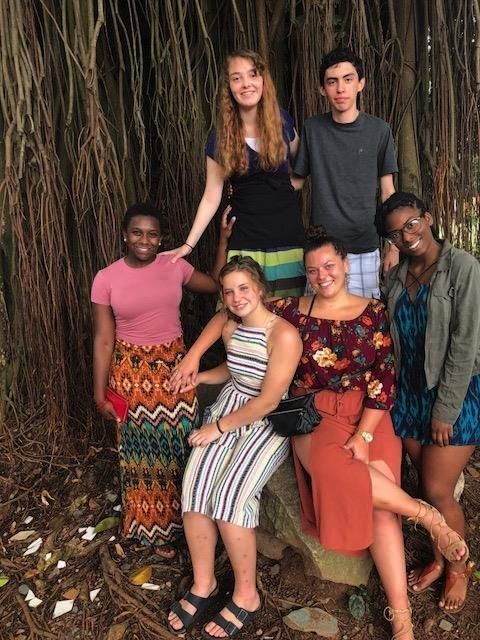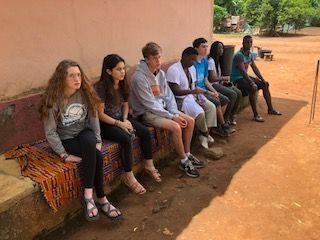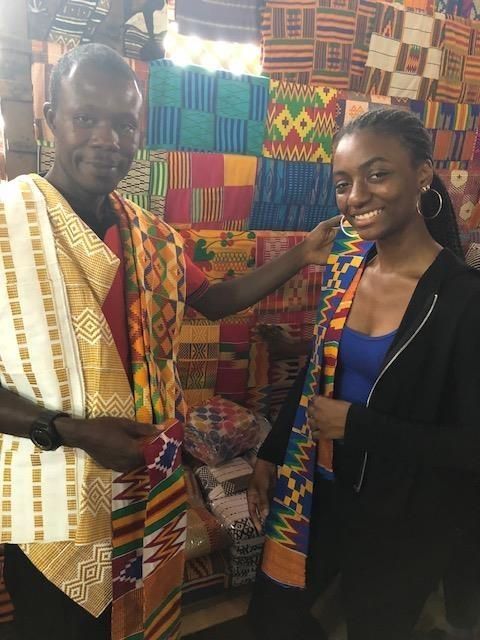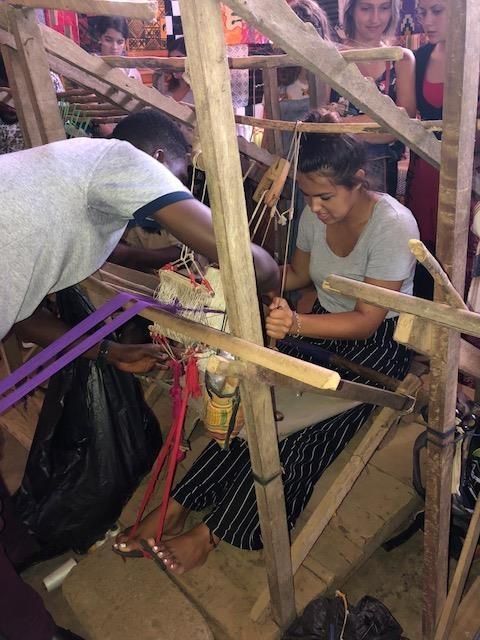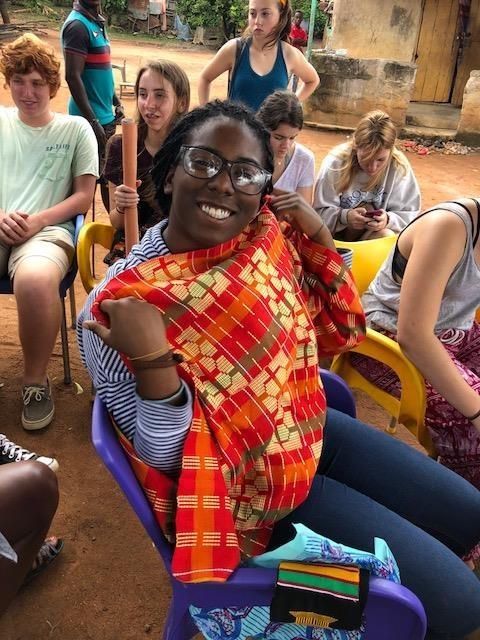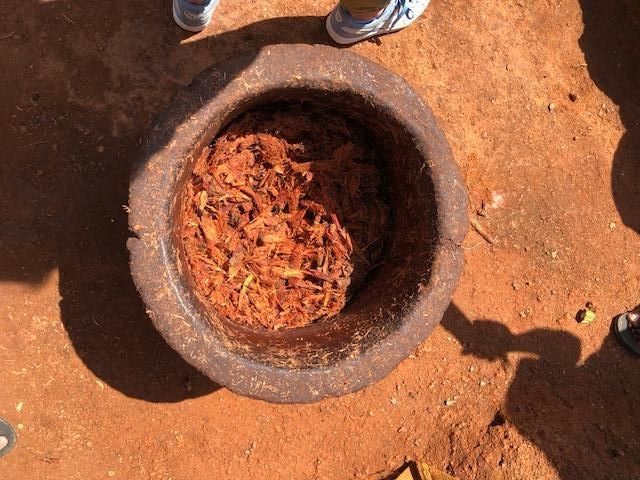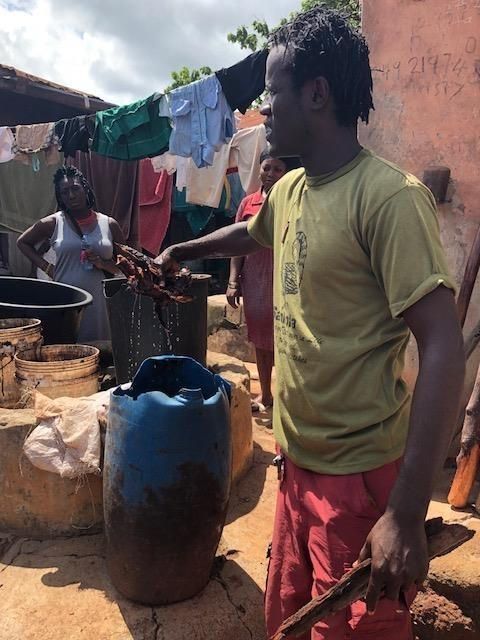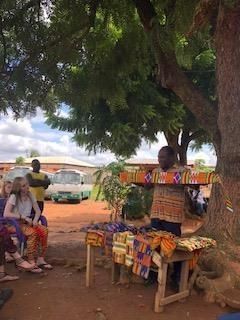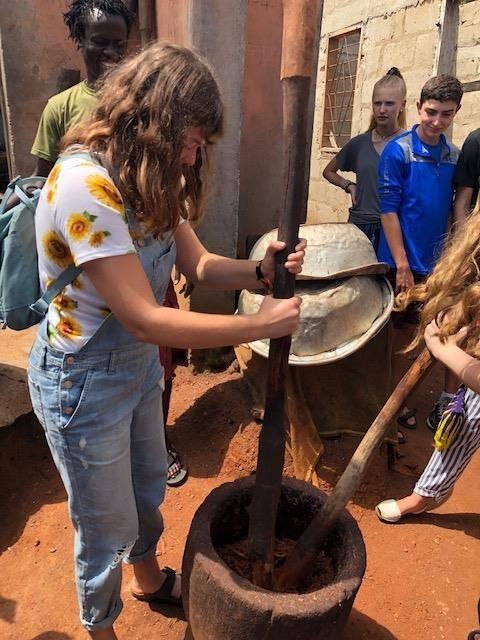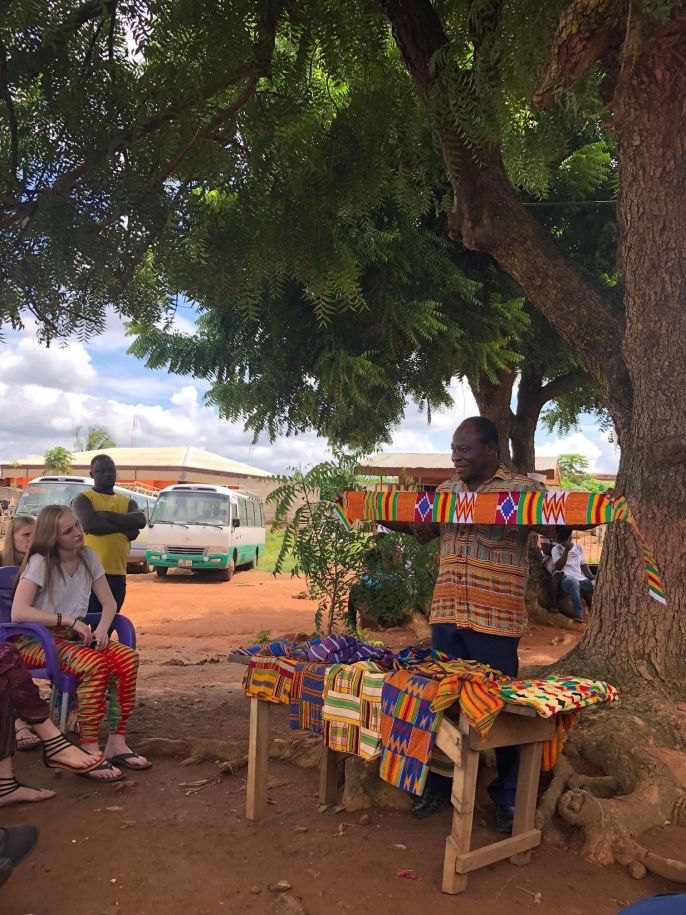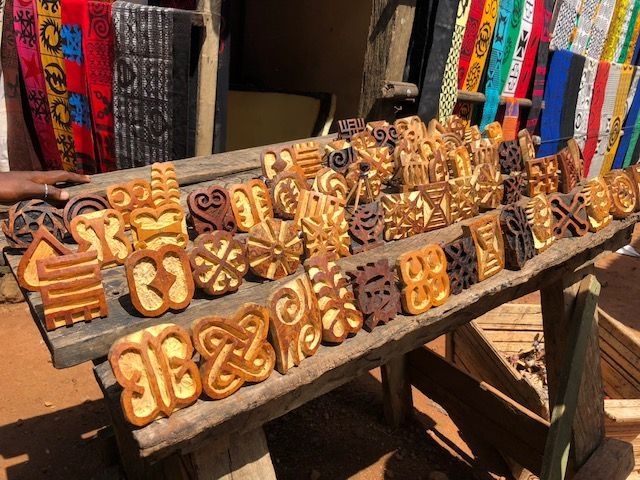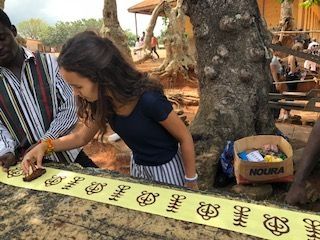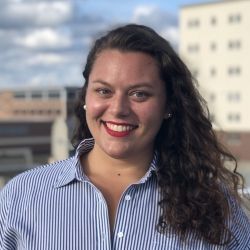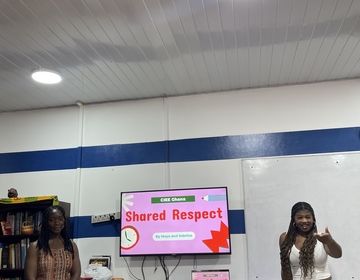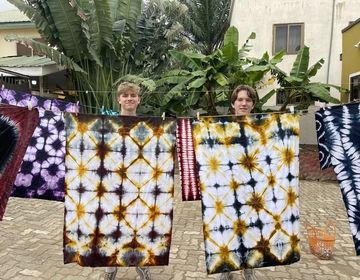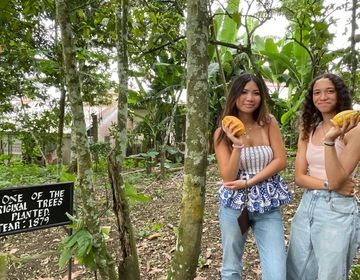Manhyia, Market and Mileage- Making Memories in Kumasi
Following a long week of service, cultural competence classes and weaving baskets, the Global Navigators set off early Saturday morning for our weekend trip to Kumasi.
Kumasi is the second largest metropolitan city in Ghana, after Accra. It is located in the Ashanti region and is home to the Kumasi Market, also known as the Kejetia market, which is the largest open market in West Africa. Kumasi also holds many traditional monuments for not only the Asante people, but also for widespread Ghanaian culture.
After a smooth four-hour bus ride, we made our first stop at the Bonwire Village. The Bonwire Village is home to the famous Kente Cloth- created originally for the royal Asante people, but now worn throughout Ghana and many other African countries. Each Kente cloth is woven individually by hand (and feet) and originally were created with only black and white cloth, but now comprise of various colors. Students were able to try their hand at weaving different Kente cloths, and also had the opportunity to learn about the history of the origin of the cloth and how it is used today. There are specific cloths made especially for the Asante kings, as well as cloth made in honor of memorable visitors, including Bill Clinton and Barack Obama.
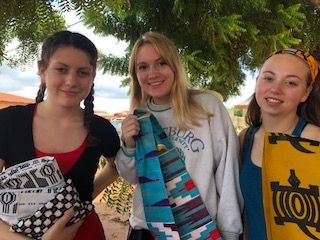
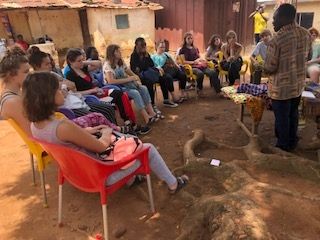
Adinkra symbols are commonly found stamped on different Kente cloths. These symbols carry various meanings and have been prominent in Ghanaian culture since the establishment of their society. We had the opportunity to travel a few miles from the Kente village to the Ntonso Adinkra Village to learn the ropes of how they are made and the significance they hold. We were given a tour by professional craftsmen who explained how the ink that is used is derived from the bark of a specific tree, as well as the process of boiling it to the point of usage. The students were given the opportunity to practice pounding the bark, showing how it may take a little longer than usual for our inexperience to produce ink! Following this, we were able to stamp our own cloth with Adinkra symbols to take back to Legon with us.
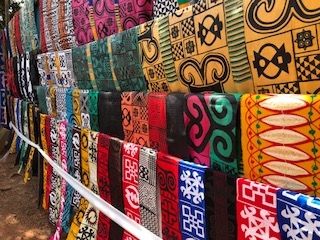
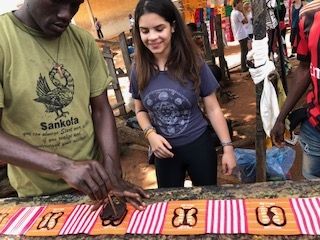
After resting comfortably in our hotel, we woke Sunday morning and trekked to the Manhyia Palace to take a tour and learn about the history of the Asante tribe. We first watched a video on the history of the Asante people and the origin of the palace. The students learned about the seven major wars between the Asante and British people, the famous gold-work of the Asante’s and the triumphs of the tribe as a whole. The palace was built in 1925 by the British and offered to Asantehene Agyeman Prempeh I as a gift after being exiled for 25 years. The Asante people refused to occupy the structure until they had paid for it in full, thus becoming their Ahenfie- palace in Twi. Within the palace students were able to see various memorabilia from the first king’s occupancy of the palace, as well as famous gold-work of the Asante people and different sculptures of early leaders.
We ended our Kumasi trip by stopping at the world-famous Kumasi market. Students were able to practice their bargaining skills with local sellers and explore the hundreds of shops and stalls within the market. After buying souvenirs, clothes and FanIce we boarded our busses and headed back to Legon.
Medaase,
Keyandra, Harriet and Kaylee
Related Posts
Student Project: Shared Respect
During this program, the participants worked in groups to create projects reflecting their experiential learning from the last three weeks. The following is a selection from Sabrina Addo and Maya... keep reading
Tying Up Loose Ends
With only a few days left in our program, we are embracing every opportunity to make lasting memories and reflect on our incredible journey. One of the highlights of this... keep reading
Visiting Ghana’s First Cocoa Farm
Student Blog Takeover: Milo and Anthea visit Ghana's first cocoa farm
